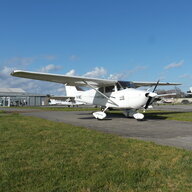-
Posts
399 -
Joined
-
Last visited
-
Days Won
1

Bosi72 replied to APenNameAndThatA's topic in Student Pilot & Further Learning

Bosi72 replied to cheeseman's topic in Student Pilot & Further Learning

Bosi72 replied to cheeseman's topic in Student Pilot & Further Learning

Bosi72 replied to Garfly's topic in AUS/NZ General Discussion

Bosi72 replied to petercoota's topic in AUS/NZ General Discussion

Bosi72 replied to turboplanner's topic in Aircraft Incidents and Accidents

Bosi72 replied to poteroo's topic in AUS/NZ General Discussion

Bosi72 replied to FlyBoy1960's topic in Aircraft Incidents and Accidents

Bosi72 replied to flying dog's topic in AUS/NZ General Discussion

Bosi72 replied to flying dog's topic in AUS/NZ General Discussion

Bosi72 replied to flying dog's topic in AUS/NZ General Discussion

